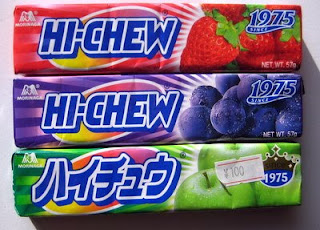There are three elements to a "primarily geographically deceptively misdescriptive" refusal under Section 2(e)(3): the mark refers primarily to a generally-known geographical location; the relevant public would likely believe that the goods or services originate from that location, when they do not; and the misrepresentation must be material to the purchasing decision.
In re Jonathan Drew, Inc. d/b/a Drew Estate (January 28, 2011) [precedential]. [
TTABlogged here]. How would you apply the test to these marks:
LONDON SOHO NEW YORK for cosmetic bags; and
JPK PARIS 75 & Design for "sunglasses; wallets, handbags and purses, travel bags, suitcases; belts, shoes?"
 In re Conair Corporation
In re Conair Corporation, Serial No. 77210108 (January 14, 2011) [not precedential].There was no dispute that London, Soho, and New York are generally known locations, or that Applicant's goods will not be manufactured or originate in those locations.
Applicant maintained that because Soho identifies neighborhoods in both
London and
New York, the commercial impression of the mark is of the two neighborhoods and not the entire cities. Therefore, it argued, the required goods/place association is lacking because the consuming public would not think the goods originated in those neighborhoods. Instead, consumers would consider the mark as suggesting that the goods are "hip, upscale, artsy and edgy," like the neighborhoods.
The Examining Attorney countered that the mark gives the commercial impression that the source of the goods is London or Soho or New York: i.e., three possibilities. The Board disagreed, finding that the ambiguity in and structure of the mark leads one to focus on the SOHO portion. "This in turn minimizes the impression that the mark indicates the origin of the goods, but rather takes on a more atmospheric impression by referencing not London and New York per se, but the artsy Soho neighborhoods of these cities."
In any event, there was no evidence of record that cosmetic bags sold empty are manufactured in any of these locations. Although New York is a fashion center, there was no evidence that empty cosmetic bags are fashion items. The record did show that cosmetic bags are given away in Soho New York and in London, "[b]ut such evidence could support a goods/place association for every city on the planet that has a drug store."
In sum, the record did not support the required goods/place association. Moreover, the Office failed to prove the requisite materiality under the third prong of the 2(e)(3) test. And so the Board reversed the refusal.
In re Miracle Tuesday, LLC, Serial No. 77649391 (February 3, 2011) [not precedential]. There was no dispute that Paris is a well-known center of design and fashion, and that Applicant is a Nevada corporation located in Miami.

Applicant first argued that the dominant portion of its mark is JPK and that the primary significance of the mark is not a geographic location. The Board disagreed, finding that consumers would assume that the goods have a connection with Paris either in their manufacture or design.
Next Applicant asserted that its manager and designer, Jean Pierre Klifa [get it? JPK -
ed.] is Parisian, and it urged that because Mr. Klifa, as the creative force behind its products, lived and worked in Paris for 23 years, the Board should consider the design of the products as having originated in Paris.
 JPK
JPK
The Board disagreed because "the current connection between applicant and Paris on the record is too tenuous to avoid the prohibition under Section 2(e)(3)." "Although Mr. Klifa may still consider himself to be Parisian, the goods applicant seeks to register are not because there is no current connection between the goods and Paris." [Somehow JPK Nevada 75 just doesn't have the same allure, does it? -
ed.]. It found that the second prong of the 2(e)(3) test was satisfied.
Finally, as to materiality, the evidence showed Paris to be a recognized center of design. [That's Paris, France, not
Paris, Illinois -
ed.]. Given the renown and reputation of Paris for fashion designs, the Board "may infer that at least a substantial portion of consumers who encounter applicant's mark ... are likely to be deceived into believing that these products come from or were designed in Paris."
In re Jonathan Drew, Inc. d/b/a Drew Estate, ___ USPQ2d ___, Serial No. 77099522 (TTAB 2011),
quoting In re Pacer Tech., 338 F.3d 1348, 67 USPQ2d 1629, 1631 (Fed. Cir. 2003).
And so the Board affirmed this refusal.
Text Copyright John L. Welch 2011.






































